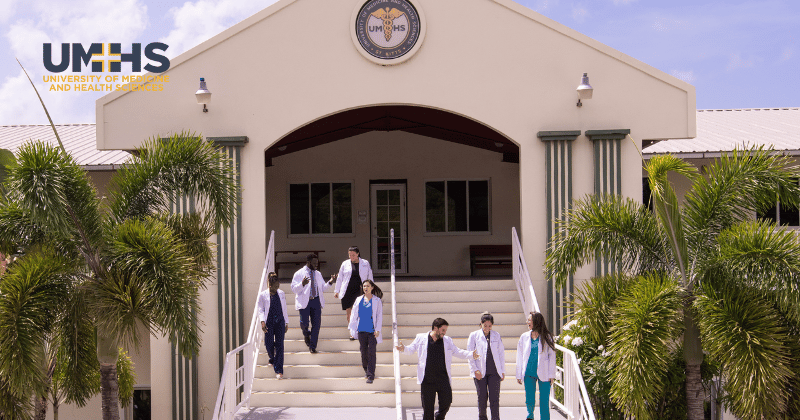Becoming a doctor is a long and challenging journey that typically takes at least a decade of rigorous education and training. The process begins with four years of undergraduate education, followed by four years of medical school. After completing medical school, graduates enter a residency program, which can vary in length from three to seven years depending on the medical specialty chosen. Most individuals graduate from medical school around the age of 26, and can complete their residencies and begin practicing independently in their early to mid-thirties, depending on their chosen specialty. During residency, doctors earn a modest salary that typically ranges from $55,000 to $65,000 per year, along with benefits such as health insurance and paid time off. This extensive training ensures that doctors are well-prepared to provide high-quality care to their patients, balancing the inherent challenges and rewards of the medical profession. Once you’ve decided to pursue your goal of becoming a doctor, you might wonder, “How long does it take to become a doctor?” This article is written to serve as a guideline of how long it takes to become a medical doctor (DO or MD) in the United States.
What does a doctor do? Doctors play a multifaceted role in the healthcare system, primarily focused on diagnosing and treating illnesses, managing chronic conditions, and promoting overall health and wellness. They conduct thorough physical exams, order and interpret diagnostic tests, and develop personalized treatment plans for their patients. This often involves prescribing medications, performing medical procedures, and providing advice on lifestyle changes to improve health outcomes. Preventive care is also a significant aspect of their work, as doctors educate patients on disease prevention, administer vaccinations, and offer screenings for early detection of health issues.
What is the shortest time it takes to become a doctor? The usual time required to become a doctor in the United States is approximately 11 years. This includes 4 years of undergraduate education, 4 years of medical school, and at least 3 years of residency training, depending on the specialty. During this period, students must complete rigorous coursework, clinical rotations, and various standardized exams such as the MCAT and USMLE.few accelerated programs that combine a Bachelor of Science (BS) degree with a Doctor of Medicine (MD) degree, which can shorten this timeline to about 6-7 years. These combined BS/MD programs are designed to streamline the education process for exceptional students, allowing them to enter the medical profession more quickly. While these programs can significantly reduce the time needed, they are highly competitive. Many individuals who complete the programs describe them as very challenging. Most aspiring doctors will follow the traditional 11-year path.
What are the two types of physicians in the USA? In the United States, the two types of physicians are Medical Doctors (MDs) and Doctors of Osteopathic Medicine (DOs).Doctors of medicine (MDs): These physicians practice allopathic medicine, which focuses on diagnosing and treating medical conditions primarily through the use of medications and surgery. MD programs emphasize a scientific approach to medicine and typically include four years of medical school followed by residency training in a chosen specialty.
How long is medical school? Medical school typically lasts four years. The program is divided into two parts: the first two years are generally focused on classroom-based lectures in basic medical sciences, such as anatomy, physiology, pharmacology, and pathology. The latter two years are devoted to clinical rotations in the hospital, where students gain hands-on experience in various medical specialties under the supervision of experienced physicians.
Is it worth the journey of becoming a doctor? Whether becoming a doctor is worth the journey is a highly personal decision that depends on individual goals, values, and circumstances. For many, the rewards of a medical career—including the opportunity to make a significant impact on patients’ lives, the intellectual challenge, and the potential for a stable and lucrative career—make the long and rigorous journey worthwhile. The fulfillment derived from diagnosing and treating patients, contributing to medical advancements, and being a respected member of the community can be deeply satisfying.
How fast can you become a doctor? While there are some 6-7 year combined BS/MD programs, most individuals become a doctor after at least 11 years of training. This includes 4 years of undergraduate studies, 4 years or medical school, and a minimum of 3 years in residency.
Can I become a doctor by age 30? Yes, it is possible to become a doctor by age 30. The typical timeline for becoming a doctor involves completing 4 years of undergraduate education, followed by 4 years of medical school, and then a residency program, which can vary in length from 3 to 7 years depending on the specialty chosen. Assuming you start your undergraduate education immediately after high school at around age 18, you would complete your undergraduate degree by age 22. Following this, you would finish medical school by age 26. If you choose a specialty with a residency lasting 3 to 4 years, such as internal medicine, family medicine, or pediatrics, you could potentially complete your training and start practicing independently by age 29 or 30.
Is 40 too late to become a doctor? No, 40 is not too late to become a doctor. While starting a medical career later in life does come with unique challenges, such as balancing family responsibilities and financial considerations, it is entirely feasible. Medical schools appreciate the diverse backgrounds and life experiences older applicants bring, which can enhance patient care through maturity and improved communication skills. The educational journey includes four years of medical school and a residency program lasting three to seven years, depending on the specialty. Many older students find their focus and dedication to be strong assets. If you have the passion and commitment to undertake the necessary training, starting a medical career at 40 can still lead to a fulfilling and impactful career.
How long is the shortest residency to become a doctor? The shortest residency lasts three years. These programs include:
Internal Medicine - which focuses on comprehensive adult care and disease management.Family Medicine - providing broad-based healthcare for individuals of all ages.Pediatrics - specializing in the medical care of infants, children, and adolescents.Emergency Medicine - which trains physicians to handle acute medical issues in fast-paced environments.Anesthesiology - preparing doctors to administer anesthesia and manage perioperative care.Physical Medicine and Rehabilitation (PM&R) - aimed at restoring function to patients with physical impairments or disabilities.Neurology - focusing on diagnosing and treating disorders of the nervous system.
Do you get paid for your residency program? Yes, residents do get paid for their work during their residency programs. Resident physicians receive a salary, although it is much lower than what fully licensed physicians earn. The salary varies depending on factors such as the location of the residency program, the specialty, and the year of training. On average, resident salaries in the United States range from approximately $55,000 to $65,000 per year, with salaries typically increasing slightly with each year of residency completed. In addition to salary, many residency programs provide benefits such as health insurance, paid time off, and sometimes housing stipends or meals. While the salary is modest, it helps support residents financially as they complete this essential phase of their medical training.
How long does it take to be a Doctor after medical school? After medical school, it typically takes an additional 3 to 7 years to become a fully independent doctor, depending on the chosen specialty. This period is known as residency, where newly graduated doctors receive comprehensive training within their specialty area, such as Internal Medicine, Family Medicine, or Surgery. In some cases, doctors may also choose to pursue further fellowship training, which can add 1 to 3 more years, to specialize in a subspecialty. Therefore, the total time required after medical school varies but generally ranges from 3 to 10 years, depending on the specific career path.
Getting started in medicine. Now that you know more about becoming a how long it takes to be a doctor, it may be time to take the first step and talk with a member of our admissions staff. You can book an appointment with them here.
If you would like to learn more information about UMHS, check out our FAQ's page where our medical school's most commonly asked questions are answered .
Start your application here
Popular and related articles
















